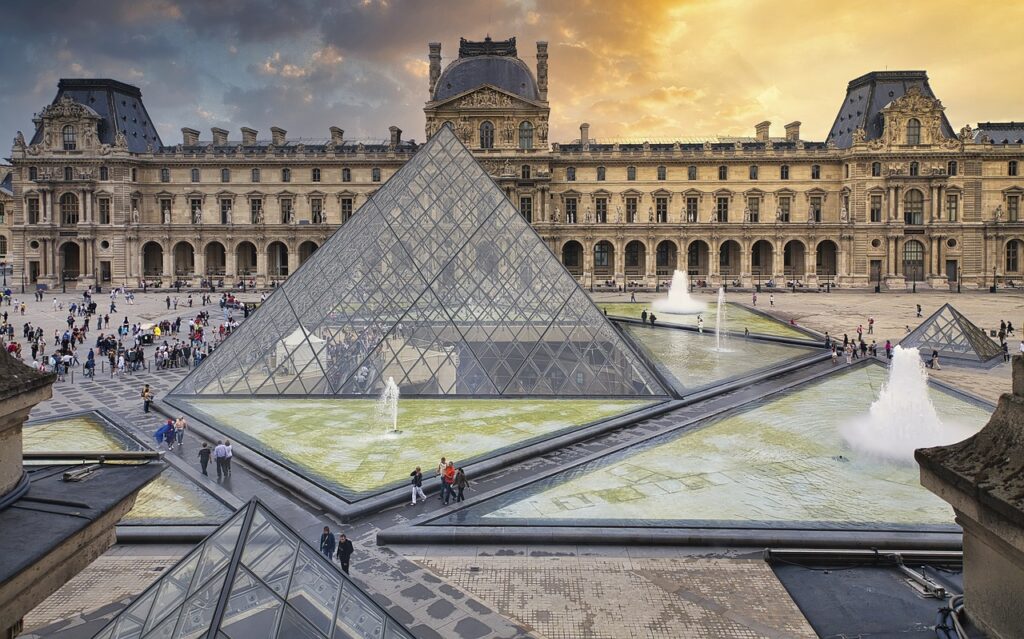
What is Art?
Art is a broad and multifaceted concept that encompasses various forms of creative expression. It is generally understood as the intentional creation of objects, performances, or experiences that convey ideas, emotions, or aesthetics. Art can be both a reflection of and an influence on culture, society, and individual experiences.
Here are some key aspects of art:
1. Forms and Media
- Visual Arts: Includes painting, drawing, sculpture, photography, printmaking, and other visual forms. These works are often appreciated for their aesthetic qualities and technical skill.
- Performing Arts: Encompasses theatre, dance, music, and other live performances. These arts involve live, often ephemeral, presentations that can evoke emotional and intellectual responses.
- Literary Arts: Includes poetry, novels, essays, and other written works. Literary arts explore narrative, language, and storytelling to convey meaning and emotion.
- Applied Arts: Combines aesthetics with practical function, including design fields such as graphic design, fashion design, industrial design, and architecture.
2. Purpose and Function
- Aesthetic Experience: Art often aims to provide an aesthetic experience, engaging the senses and evoking emotional or intellectual responses. It can create beauty, provoke thought, or provide pleasure.
- Expression and Communication: Art can serve as a means for artists to express personal experiences, emotions, or ideas. It can also communicate cultural, social, or political messages to audiences.
- Cultural and Social Roles: Art plays a role in shaping and reflecting cultural identity, societal values, and historical context. It can also challenge norms and provoke social change.
3. Creativity and Innovation
- Originality: Art often emphasizes creativity and originality, offering new perspectives, forms, or techniques. Innovative approaches can redefine existing genres or create entirely new ones.
- Imagination: Art frequently involves the use of imagination and fantasy, allowing artists to explore abstract concepts, alternate realities, or hypothetical scenarios.
4. Interpretation and Meaning
- Subjectivity: The interpretation of art is highly subjective and can vary widely among different viewers. Meaning can be derived from the artist’s intent, cultural context, personal experiences, and individual perspectives.
- Symbolism: Many artworks use symbols, metaphors, and allegory to convey deeper meanings or explore complex themes. Understanding these symbols often requires knowledge of the context in which the art was created.
5. Art Movements and Styles
- Historical Context: Art has evolved through various movements and styles, each reflecting different cultural, philosophical, and technological developments. Examples include Renaissance, Baroque, Romanticism, Impressionism, Modernism, and Postmodernism.
- Influences and Trends: Art is influenced by historical events, social changes, technological advancements, and interactions between different cultures and artistic traditions.
6. Personal and Cultural Impact
- Emotional Resonance: Art can have a profound emotional impact on individuals, offering comfort, inspiration, or insight. Personal connections to art can be deeply meaningful and transformative.
- Cultural Reflection: Art often reflects the values, beliefs, and experiences of a particular culture or era. It can provide insight into the historical and social context in which it was created.
7. Art and Technology
- Digital Art: Advances in technology have expanded the possibilities of art, leading to the creation of digital art, virtual reality experiences, and interactive installations.
- Cross-Media: Many contemporary artists work across multiple media and disciplines, blending traditional techniques with new technologies to create innovative works.
In summary, art is a diverse and dynamic field that encompasses a wide range of creative activities and expressions. It serves multiple purposes, from aesthetic enjoyment to personal expression and cultural commentary, and continually evolves as artists explore new forms and ideas.

What is Architecture?
Architecture is the art and science of designing and constructing buildings and other physical structures. It involves not only the practical considerations of function, materials, and engineering but also aesthetic, cultural, and environmental aspects. Architecture shapes the built environment, reflecting human needs, values, and creativity, while balancing form and function.
Here are some key dimensions of architecture:
1. Design and Function
- Design: At its core, architecture is about designing spaces that are both functional and aesthetically pleasing. Architects create plans and blueprints that detail how a building will look, how it will be structured, and how it will serve its intended purpose.
- Functionality: Every building serves a specific function, whether it’s a home, office, school, or public space. Good architecture balances form (how it looks) with function (how it works for its occupants).
2. Art and Aesthetics
- Aesthetic Value: Architecture is considered one of the fine arts because it can evoke emotions, create atmospheres, and express ideas through form, materials, color, and texture. Architects use principles of proportion, symmetry, balance, and contrast to create visually compelling structures.
- Style: Architecture has a wide range of styles, from classical (like Greek and Roman) to modernist, postmodern, brutalist, and contemporary. Each style reflects the cultural, historical, and technological influences of its time.
3. Engineering and Construction
- Structure and Stability: Architecture is also deeply rooted in engineering. Architects must ensure that their designs are not only beautiful but structurally sound and safe. This involves understanding physics, materials science, and construction methods.
- Materials: The choice of materials—such as wood, concrete, steel, or glass—affects both the appearance and durability of a building. Advances in material technology often lead to new architectural possibilities.
4. Cultural and Historical Significance
- Cultural Expression: Architecture is a reflection of the society that creates it. Buildings often embody the values, beliefs, and aspirations of the culture or civilization they belong to. For example, Gothic cathedrals reflect the medieval focus on religion, while modern skyscrapers represent technological progress and urbanization.
- Historical Influence: Architectural styles and methods have evolved over time. From ancient pyramids and temples to Renaissance palaces and modernist skyscrapers, architecture serves as a record of historical and social development.
5. Environmental and Sustainable Design
- Sustainability: In recent decades, architecture has increasingly focused on environmental sustainability. Architects consider the impact of their designs on the environment, seeking to minimize energy consumption, reduce waste, and use eco-friendly materials. This is often referred to as “green architecture” or “sustainable design.”
- Urban Planning: Architecture is also closely connected to urban planning, which involves designing not just individual buildings but whole communities and cities. Architects work with urban planners to create spaces that are livable, efficient, and harmonious with their surroundings.
6. Innovation and Technology
- Advances in Technology: Modern architecture often incorporates cutting-edge technology, such as smart building systems, energy-efficient designs, and innovative construction techniques. Digital tools like CAD (Computer-Aided Design) have revolutionized the way architects work, allowing for more precise and complex designs.
- Experimental and Futuristic Design: Some architects push the boundaries of what’s possible, creating futuristic or unconventional designs that challenge traditional ideas of form, structure, and space.
7. Emotional and Psychological Impact
- Space and Experience: Architecture affects how people feel and interact with spaces. Well-designed buildings can evoke feelings of awe, comfort, tranquility, or excitement. Architects carefully consider light, scale, acoustics, and layout to shape the emotional experience of a space.
In essence, architecture is a fusion of art, engineering, and culture, aimed at creating spaces that serve both practical and expressive functions. It shapes not only our physical environment but also our experiences, communities, and identities.

What is Aesthetics?
Aesthetics is a branch of philosophy that deals with the nature of beauty, art, and taste, as well as the creation and appreciation of beauty. It explores the sensory experiences we have in response to objects, events, and environments, focusing on what we perceive as pleasing, harmonious, or emotionally engaging. Aesthetics addresses both the theory of art and the broader question of how humans interact with and interpret the world in terms of beauty and meaning.
Here are some key aspects of aesthetics:
1. Philosophical Inquiry into Beauty
- What is beauty? A central question in aesthetics is the nature of beauty and how we define it. Philosophers like Plato, Aristotle, and Kant have offered various theories about the relationship between beauty, truth, and morality.
- Objective vs. Subjective: Aesthetic discussions often revolve around whether beauty is an objective quality (something inherent in objects) or subjective (depending on individual perception).
2. Art and Artistic Experience
- What makes something art? Aesthetics examines what qualifies as art and how we differentiate art from non-art. It explores the principles that define artistic value, creativity, and expression.
- How do we interpret art? The field also studies how viewers or listeners engage with art, how meaning is communicated through artistic mediums, and the emotional or intellectual responses art provokes.
3. Taste and Judgement
- What is taste? Aesthetics looks into personal taste and cultural preferences, analyzing why different people or societies find certain things beautiful, moving, or meaningful while others do not.
- Aesthetic Judgement: This concept refers to the process by which individuals make decisions about what is aesthetically pleasing or displeasing. Philosophers like Immanuel Kant delved into this, proposing that aesthetic judgement can be disinterested, meaning it isn’t influenced by personal gain but by pure appreciation.
4. Sublime vs. Beautiful
- The Sublime: A related aesthetic concept that deals with awe-inspiring, vast, or overwhelming experiences (such as a stormy sea or a towering mountain) that evoke both admiration and fear.
- The Beautiful: Often associated with harmony, symmetry, and pleasure, the beautiful contrasts with the sublime, focusing more on what is pleasing to the senses and emotionally soothing.
5. Cultural and Historical Context
- Cultural Variation: Aesthetic values differ significantly across cultures and historical periods. What is considered beautiful or artistic in one culture may be seen differently in another.
- Evolution of Aesthetics: The concept of aesthetics has evolved over time, from classical ideals of balance and form to modern, more diverse and inclusive understandings that embrace a variety of artistic forms and expressions.
In short, aesthetics is the philosophical study of how we experience and evaluate beauty, art, and sensory phenomena, influencing everything from artistic creation to design, architecture, and even daily life.


